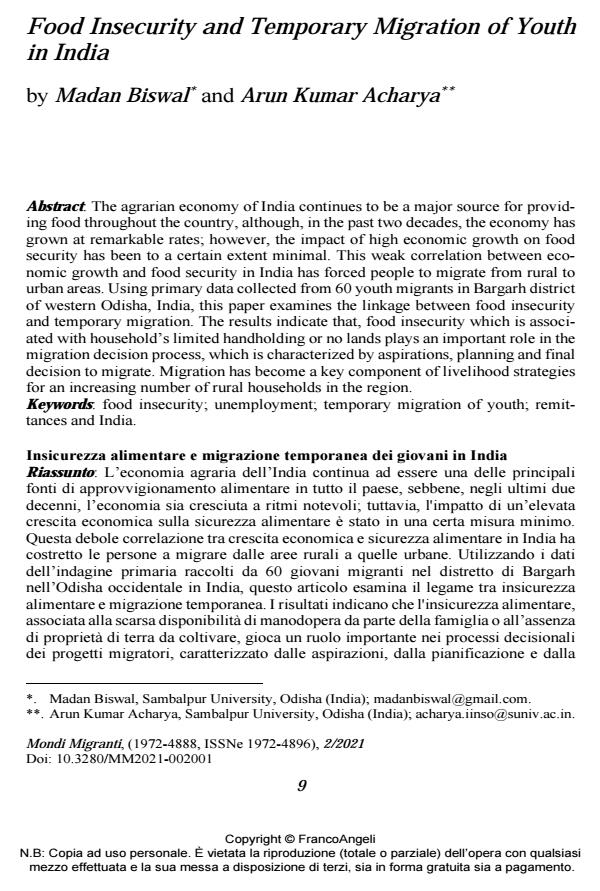Food Insecurity and Temporary Migration of Youth in India
Journal title MONDI MIGRANTI
Author/s Madan Biswal, Arun Kumar Acharya
Publishing Year 2021 Issue 2021/2
Language English Pages 15 P. 9-23 File size 175 KB
DOI 10.3280/MM2021-002001
DOI is like a bar code for intellectual property: to have more infomation
click here
Below, you can see the article first page
If you want to buy this article in PDF format, you can do it, following the instructions to buy download credits

FrancoAngeli is member of Publishers International Linking Association, Inc (PILA), a not-for-profit association which run the CrossRef service enabling links to and from online scholarly content.
The agrarian economy of India continues to be a major source for providing food throughout the country, although, in the past two decades, the economy has grown at remarkable rates; however, the impact of high economic growth on food securi-ty has been to a certain extent minimal. This weak correlation between economic growth and food security in India has forced people to migrate from rural to urban areas. Using primary data collected from 60 youth migrants in Bargarh district of western Odisha, India, this paper examines the linkage between food insecurity and temporary migration. The results indicate that, food insecurity which is asso-ciated with household’s limited handholding or no lands plays an important role in the migration decision process, which is characterized by aspirations, planning and final decision to migrate. Migration has become a key component of livelihood strategies for an increasing number of rural households in the region.
Keywords: food insecurity; unemployment; temporary migration of youth; remit-tances and India.
Madan Biswal, Arun Kumar Acharya, Food Insecurity and Temporary Migration of Youth in India in "MONDI MIGRANTI" 2/2021, pp 9-23, DOI: 10.3280/MM2021-002001